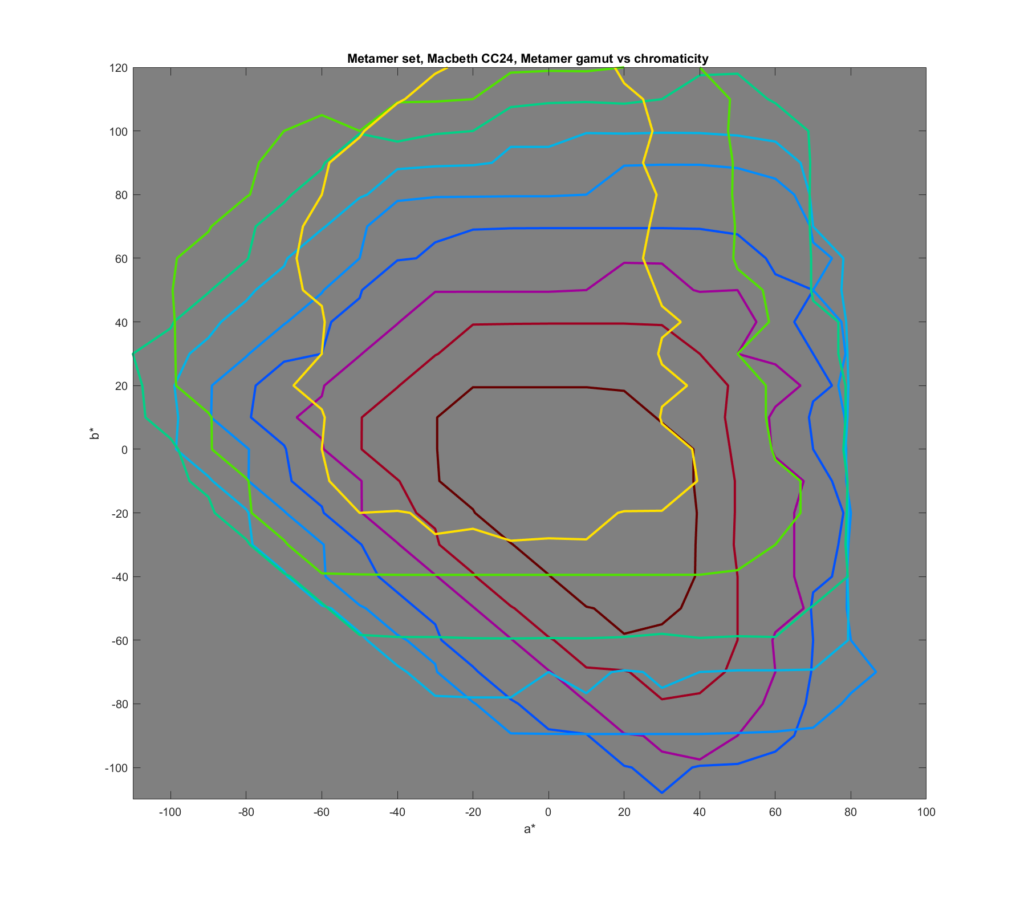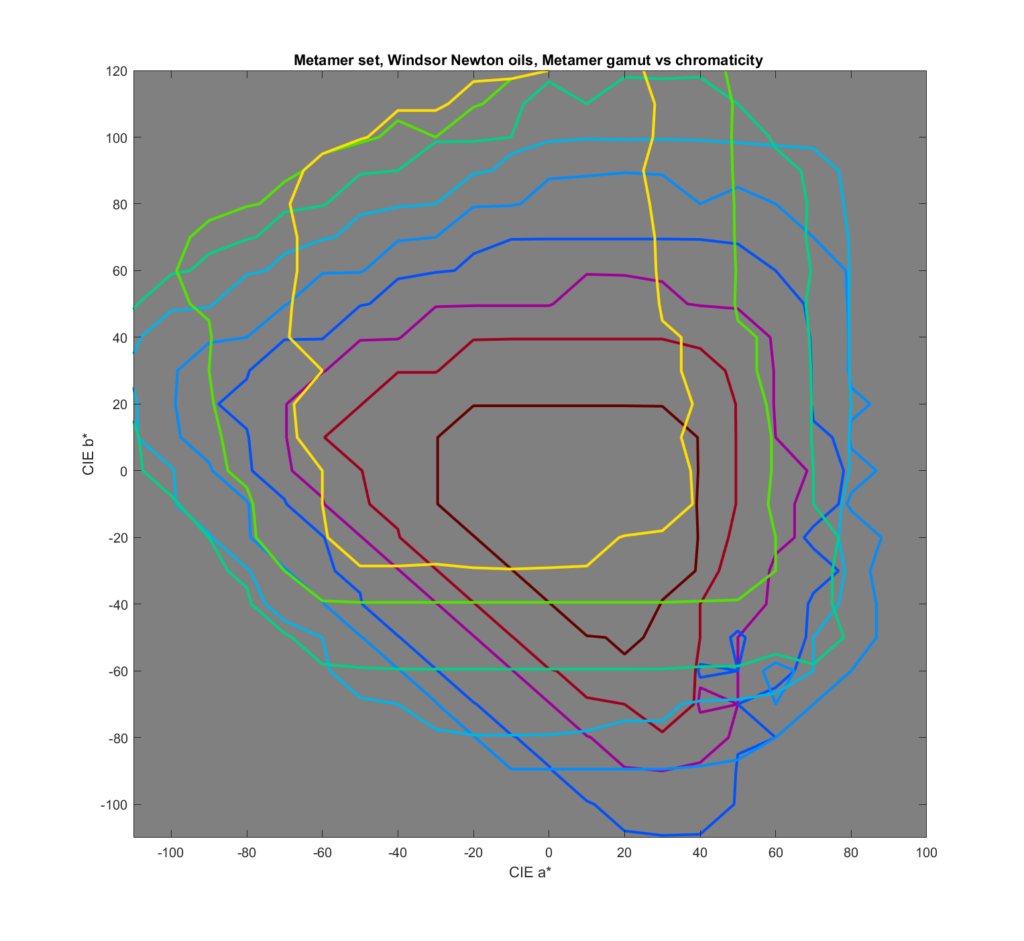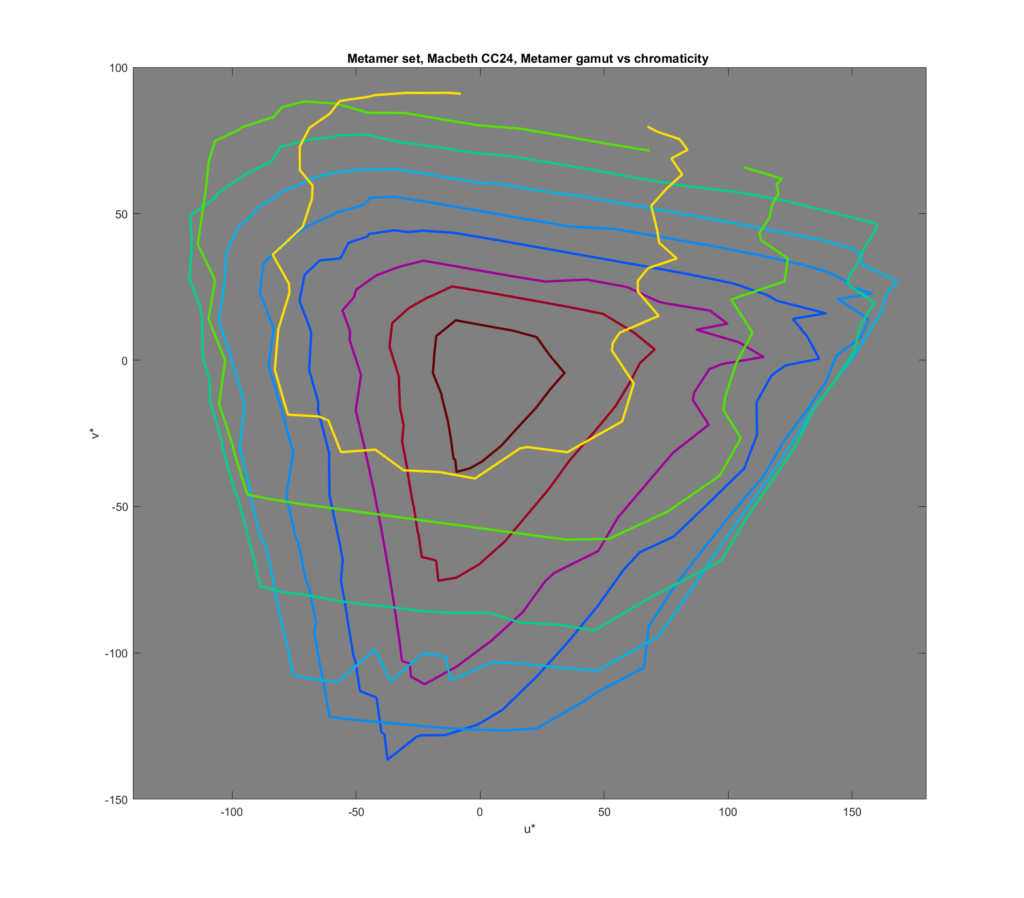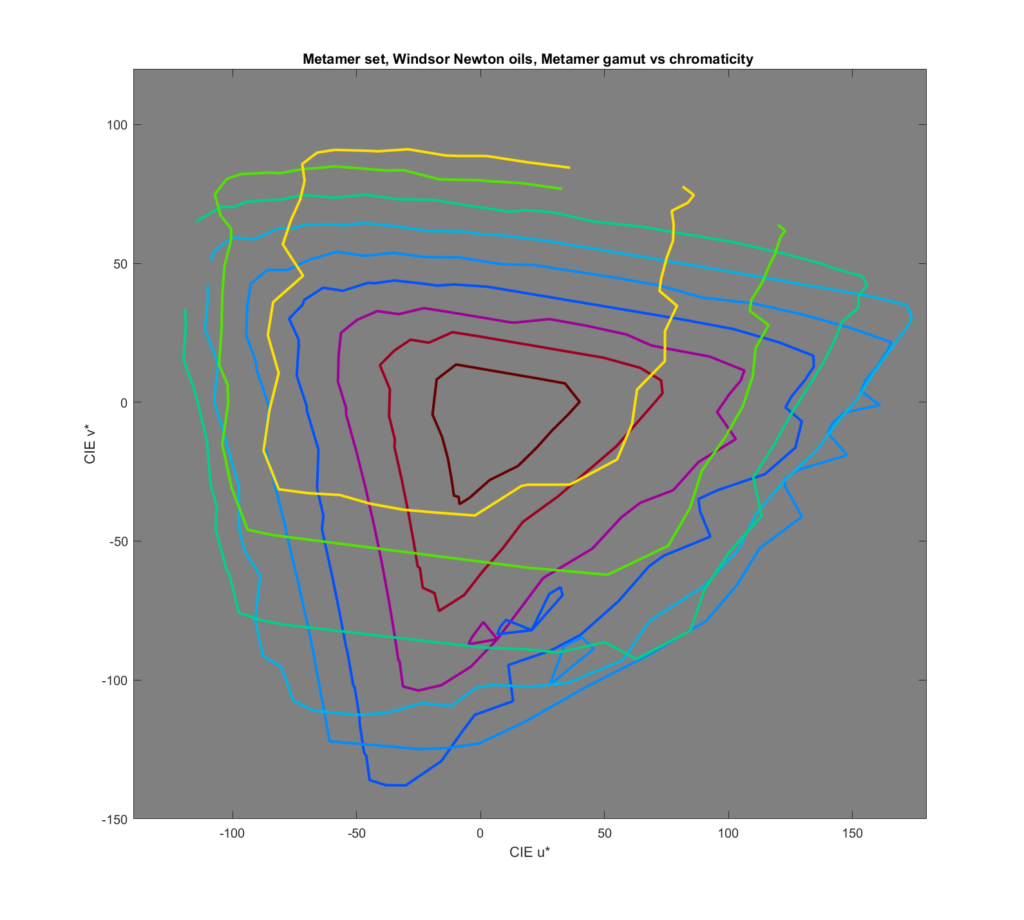I’ve previously reported on a project about observer metameric errors in digital cameras. I built a program that, given a target color and a set of sample reflectance spectra, will:
- Using principal component analysis, find a set of basis functions for the sample set
- Assuming the set is lit with a particular illuminant (I used D50 for the data I’m presenting here), find as many spectra as you specify by combining the basis functions.
- All of the spectra will resolve to the same color for a CIE 1931 2-degre observer. They are therefore metamers.
- I set the boundary conditions to exclude spectra with over 100% or less than 0% reflectance
In this post, I reported on the gamut that is available with the 7 principle basis functions from my natural spectra data set. Now I’d like to do the same thing with two other spectral sets.
The first is the Macbeth CC24.
This is a contour plot, looking at the CIEL*a*b* chromaticity plane. Nine L* values are calculated, for L* = 10 through L* = 90 in steps of 10. The luminance of the lines is approximately that of the L* to which they correspond. The hue angle changes 40 degrees clockwise with each L* step, starting at 45 degrees and ending at 85 degrees. The source for the basis functions was the Macbeth CC24 chart.
The second is the Windsor oil paint set:
It comes as a mild surprise to me that the oil paint set doesn’t have a much larger gamut. If you look carefully the the lower right of the Windsor set gamut, you can see that there are some interior places that are out of gamut.
Here are both sets of data in CIEL*u*v*:




Leave a Reply